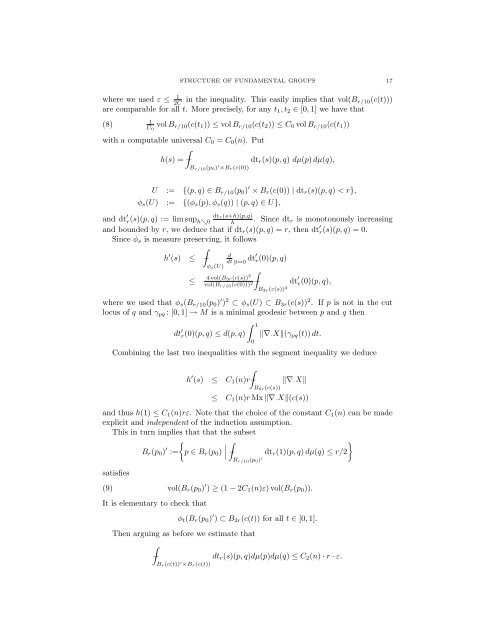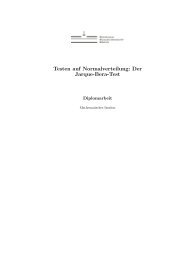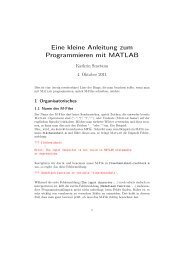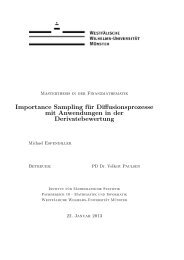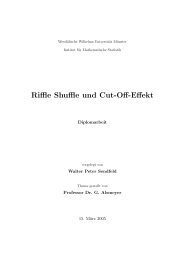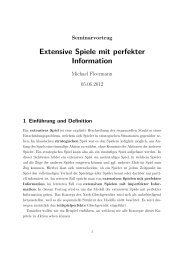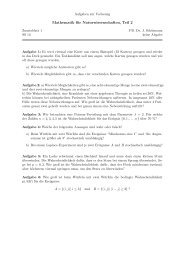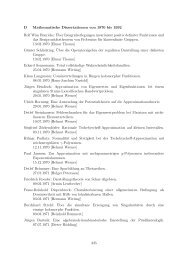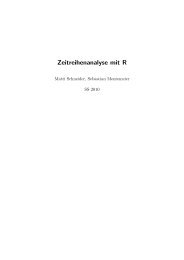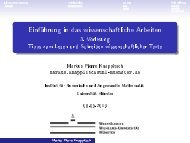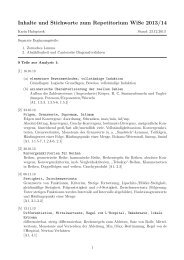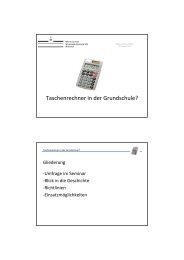Margulis Lemma
Margulis Lemma
Margulis Lemma
Create successful ePaper yourself
Turn your PDF publications into a flip-book with our unique Google optimized e-Paper software.
STRUCTURE OF FUNDAMENTAL GROUPS 17<br />
where we used ε ≤ 1<br />
2C<br />
in the inequality. This easily implies that vol(B r/10(c(t)))<br />
are comparable for all t. More precisely, for any t 1 , t 2 ∈ [0, 1] we have that<br />
(8)<br />
1<br />
C 0<br />
vol B r/10 (c(t 1 )) ≤ vol B r/10 (c(t 2 )) ≤ C 0 vol B r/10 (c(t 1 ))<br />
with a computable universal C 0 = C 0 (n). Put<br />
∫<br />
h(s) = −<br />
dt r (s)(p, q) dµ(p) dµ(q),<br />
B r/10 (p 0) ′ ×B r(c(0))<br />
U := {(p, q) ∈ B r/10 (p 0 ) ′ × B r (c(0)) | dt r (s)(p, q) < r},<br />
φ s (U) := {(φ s (p), φ s (q)) | (p, q) ∈ U},<br />
and dt ′ dt<br />
r(s)(p, q) := lim sup r(s+h)(p,q)<br />
h↘0 h<br />
. Since dt r is monotonously increasing<br />
and bounded by r, we deduce that if dt r (s)(p, q) = r, then dt ′ r(s)(p, q) = 0.<br />
Since φ s is measure preserving, it follows<br />
∫<br />
h ′ d<br />
(s) ≤ −<br />
dt |t=0 dt′ r(0)(p, q)<br />
φ s(U)<br />
∫<br />
≤<br />
4 vol(B3r(c(s))2<br />
vol(B r/10 (c(0)))<br />
− dt ′ r(0)(p, q),<br />
2<br />
B 3r(c(s)) 2<br />
where we used that φ s (B r/10 (p 0 ) ′ ) 2 ⊂ φ s (U) ⊂ B 3r (c(s)) 2 . If p is not in the cut<br />
locus of q and γ pq : [0, 1] → M is a minimal geodesic between p and q then<br />
dt ′ r(0)(p, q) ≤ d(p, q)<br />
∫ 1<br />
0<br />
‖∇·X‖(γ pq (t)) dt.<br />
Combining the last two inequalities with the segment inequality we deduce<br />
h ′ (s) ≤<br />
∫<br />
C 1 (n)r− ‖∇·X‖<br />
B 6r(c(s))<br />
≤ C 1 (n)r Mx ‖∇·X‖(c(s))<br />
and thus h(1) ≤ C 1 (n)rε. Note that the choice of the constant C 1 (n) can be made<br />
explicit and independent of the induction assumption.<br />
This in turn implies that that the subset<br />
{<br />
∫<br />
}<br />
B r (p 0 ) ′ := p ∈ B r (p 0 ) ∣ − dt r (1)(p, q) dµ(q) ≤ r/2<br />
B r/10 (p 0) ′<br />
satisfies<br />
(9)<br />
It is elementary to check that<br />
vol(B r (p 0 ) ′ ) ≥ (1 − 2C 1 (n)ε) vol(B r (p 0 )).<br />
φ t (B r (p 0 ) ′ ) ⊂ B 2r (c(t)) for all t ∈ [0, 1].<br />
Then arguing as before we estimate that<br />
∫<br />
−<br />
dt r (s)(p, q)dµ(p)dµ(q) ≤ C 2 (n) · r · ε.<br />
B r(c(t)) ′ ×B r(c(t))


